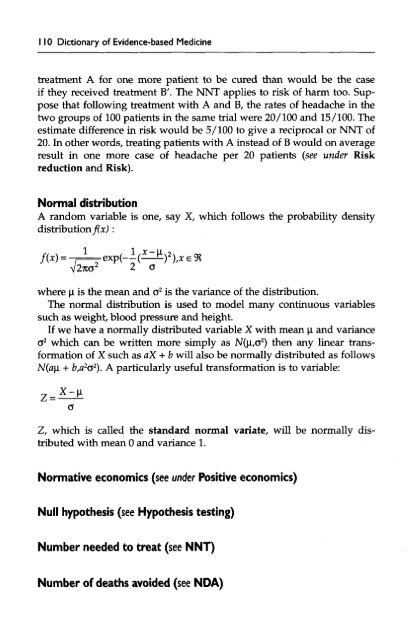Dictionary of Evidence-based Medicine.pdf
Dictionary of Evidence-based Medicine.pdf
Dictionary of Evidence-based Medicine.pdf
You also want an ePaper? Increase the reach of your titles
YUMPU automatically turns print PDFs into web optimized ePapers that Google loves.
110 <strong>Dictionary</strong> <strong>of</strong> <strong>Evidence</strong>-<strong>based</strong> <strong>Medicine</strong><br />
treatment A for one more patient to be cured than would be the case<br />
if they received treatment B'. The NNT applies to risk <strong>of</strong> harm too. Suppose<br />
that following treatment with A and B, the rates <strong>of</strong> headache in the<br />
two groups <strong>of</strong> 100 patients in the same trial were 20/100 and 15/100. The<br />
estimate difference in risk would be 5/100 to give a reciprocal or NNT <strong>of</strong><br />
20. In other words, treating patients with A instead <strong>of</strong> B would on average<br />
result in one more case <strong>of</strong> headache per 20 patients (see under Risk<br />
reduction and Risk).<br />
Normal distribution<br />
A random variable is one, say X, which follows the probability density<br />
distribution fix) :<br />
f(x) =<br />
where jj, is the mean and c» 2 is the variance <strong>of</strong> the distribution.<br />
The normal distribution is used to model many continuous variables<br />
such as weight, blood pressure and height.<br />
If we have a normally distributed variable X with mean jo, and variance<br />
cr 2 which can be written more simply as N(ji,a 2 ) then any linear transformation<br />
<strong>of</strong> X such as flX + b will also be normally distributed as follows<br />
N(a[i + b,a 2










